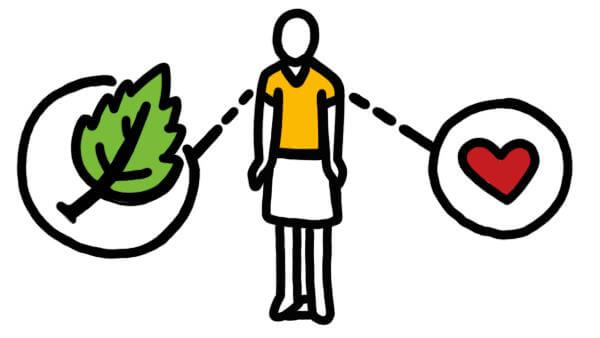What does your clothing say about you? Actually, a better question: what are you saying with your clothing? We don’t choose what we wear by accident, after all, and the choices we make send a message.
Strange as it may sound, fashion is a form of visual storytelling.
So how does your apparel tell your story?
What kinds of stories can be told by fashion designers?
Fashion is “a subject best seen”, considered by many to be “the winning formula for consumer engagement”. It is able to immediately grab people’s attention perhaps more quickly than any other medium. This likely stems from the fact that fashion is inextricably linked to the human form. And human forms are beloved by the brain. When we see someone for the first time, their appearance holds our entire attention. Appearance might even keep our attention even after they start to speak.
Through our exploration of the content creation principles that we call Scribology, we’ve learned that the brain focuses on visual information when asked to choose between auditory and visual messages. In fashion terms, this means that your brain may stay focused on someone’s clothing even after a conversation has begun. Even to the point of not listening to the words being spoken.
This is a good way to understand how fashion is so capable of telling a visual story. But it doesn’t yet address the story itself.
ASOS: Ethical, Responsible Fashion
Let’s take ASOS, an online fashion and beauty firm. Their ‘Made in Kenya Spring/Summer 18 collection’ was designed to convey a clear message along with its colorful products.
ASOS “built an ethos on its social enterprise in Kenya as well as sustainable development and responsible fashion” as it created its fashion line. As a result, in the words of Sample Machinist Gaia Waters, “It helps the consumer dress for what they stand for and subtly tells their story through what they choose to wear. It definitely shapes how people view the brand.”
Wearable visual storytelling like ASOS’ line is created through the alignment of brand with certain values, and conveying that message through marketing and manufacturing practices.
At the consumer level, the story undergoes a slight permutation, as the story is now one of personal agreement with the brand’s values.
This back-and-forth—a visual element meant to tell a story, which then tells the story of its manufacturer as it relates to the story of the wearer—can create a powerful linkage between consumers and a brand—“before they even decide if they like the aesthetics.”
It’s hard to imagine that fashion could ever overcome its aesthetics, but with strong enough visual storytelling, even the subject best seen can appeal to customers before they’re won over by its look.
The secret to overcoming that apparently insurmountable challenge—“Does it look good enough to buy?”—is something that visual storytelling is famously strong in: emotional affectivity.
“Gucci’s Creative Director, Alessandro Michele, understands that if his consumers are presented with a good story, they will remember not just the details of it but also feel emotionally connected to the brand’s vision.”
The Gucci Garden Galleria is filled with fashion items decorated with, and surrounded by, classically meaningful images of flora and fauna. They are all designed to provoke an emotional response honed by centuries of cultural reverence for the symbols. “The luxury brand has tapped into real interests, desires, wants and life pieces of these young consumers,” writes Anahat Rawal about the mostly Millennial customers that connect with the Gucci Garden.
To be sure, in Gucci’s case, the obstacle for consumers to overcome might be more financial than aesthetic; regardless, it’s the story that brings engagement and conversion.
How did Gucci form such a strong link between its brand story and its products—or, put differently, how did they facilitate this visual story?
In a word (well, two): content marketing.
Content marketing is all about knowing what your audience desires and enjoys, and providing value before/alongside your product promotion.
Gucci didn’t just do this at their Gucci Garden exhibit—they did it long beforehand, collaborating with New York artist Trevor Andrew. Andrew created the Gucci Ghost, a simple design based on a Gucci bedsheet, and made a phenomenon of the character through graffiti and social media.
Fashion has an ability to connect with cultures and consumers through audience research and successful linkage of their brand with stories that resonate. Post-Ghost Gucci designs told a different visual story, shifting away from the brand’s earlier focus on luxury and conveying a message of accessibility and relatability instead.
Fashion is designed to tell a visual story that appeals to consumers.
Consumers, in turn, choose the garments that tell a visual story that appeals to them—and, finally, the brand’s visual story becomes a part of the consumer’s self-presentation and individual visual story.
When someone says they approve of their preferred fashion company’s environmentalist dedication, they’re subtly telling two stories—the visual story of the brand that attracted them, and a visual story of themselves that they’re curating with the brand’s apparel.
As the subject to be seen, fashion tells its story quickly and lastingly—a visual narrative that immediately engages the viewer and conveys a message of both individuality and affirmation of the brand’s values.

